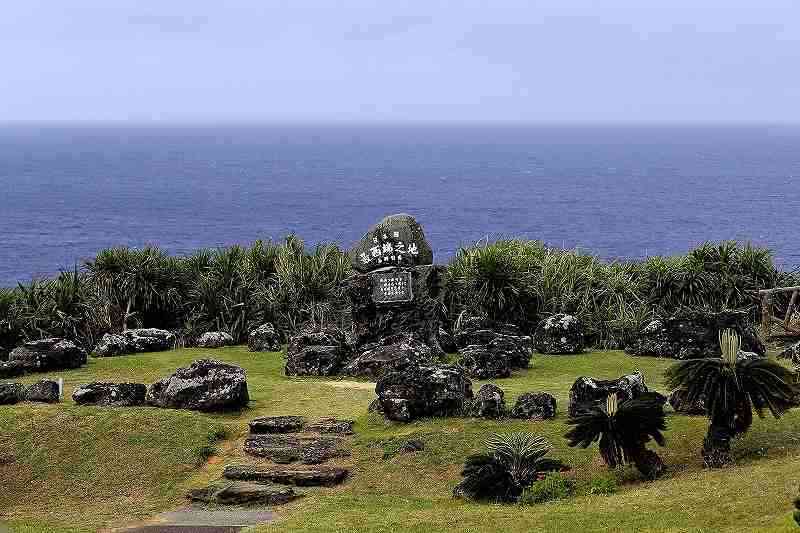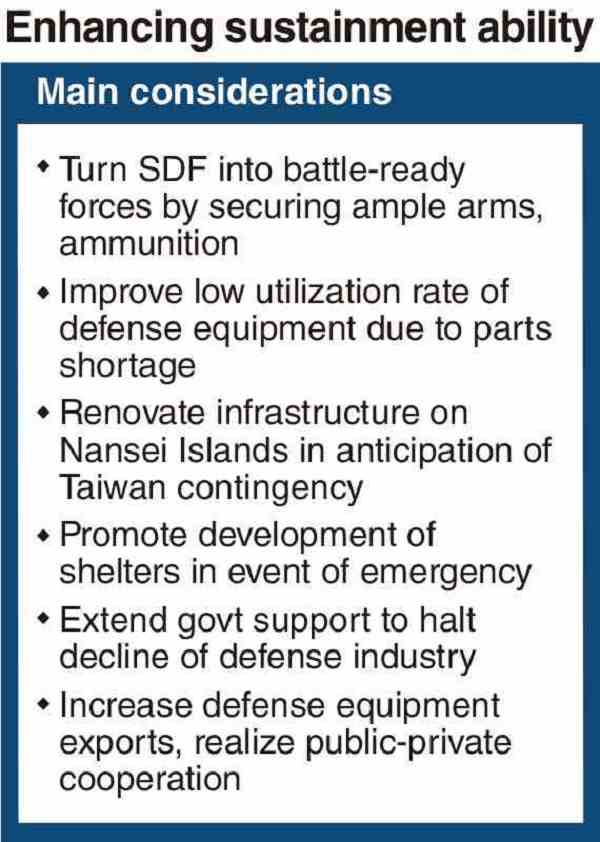Defense Perspective: Proposals / Strengthen supply capability for SDF to defend nation for protracted period

A stone monument in Yonaguni Island, Okinawa Prefecture, marking the westernmost point of Japan.
21:00 JST, November 22, 2022
The government will by the end of this year revise three key security-related documents — the National Security Strategy, the National Defense Program Guidelines, and the Mid-term Defense Program — aiming to significantly strengthen the nation’s defense capabilities. What must be done before this major change in Japan’s postwar security policy? The Yomiuri Shimbun will present its proposals in this series.
***

Russia’s invasion of Ukraine has palpably demonstrated the importance of preparedness for the defense of a nation. For the Self-Defense Forces, improving its sustainment ability to defend the nation’s territory has become vital.
At the Ground Self-Defense Force’s Yausubetsu Training Area in Hokkaido on Oct. 28, the 1st Artillery Brigade of the Northern Army took part in a live-ammunition exercise held on the assumption that it would be preventing an enemy from landing on the island.
Aboard a 203mm self-propelled howitzer, a gunnery officer yelled, “Fire!” Fourteen rounds were then fired, with roaring, booming sounds reverberating through the air.
Live-fire exercises are indispensable for maintaining the proficiency of a unit, but such opportunities are few for the SDF due to tight budget restrictions. Using 203mm self-propelled howitzers for such exercises is particularly rare. Members of the unit, who were participating in another training exercise, watched the drill and cheered.
In the postwar period, Japan has for long maintained the posture of being seen as a lightly armed nation that heavily depends on the United States through the security alliance. Thus, the nation has held down defense spending to around 1% of its gross domestic product.
The budget has prioritized front-line equipment such as destroyers, with ammunition and missiles on the back burner. Some in the SDF even say that in the event of a large-scale conflict, anti-ship missiles would last only a week at best.
Cannibalization of parts, or the practice of removing parts necessary for repair from similar equipment, has become normal, and the utilization rate of equipment is said to be around 50%. Strengthening the supply capacity of the SDF by, for instance, establishing an ammunition production line under the state’s leadership is essential.
“Ukraine showed its strength after the country was attacked by Russia, but it was initially invaded because its strength was underestimated,” a senior SDF official said. “Therefore, it is important to make an enemy think that even if it attacks Japan, it will get bogged down in a protracted conflict.”
In anticipation of a contingency in Taiwan, it is also urgently needed to improve infrastructure on the Nansei Islands that span Kyushu and Okinawa. Of the airports for general use on the Nansei Islands, only Naha Airport on Okinawa’s main island can accommodate fighter jets taking off and landing. Destroyers and other large vessels cannot dock at some ports on these islands. Such infrastructure will also be vital in evacuations in the event of an emergency.
What particularly needs to be dealt with at the earliest opportunity is infrastructure for the Sakishima Islands, which includes Okinawa’s Yonaguni Island and is about 110 kilometers from Taiwan.
“We have not yet decided where to evacuate islanders,” said Kenichi Itokazu, mayor of the town of Yonaguni. “We must evacuate them before our town becomes a battlefield.”
The development of shelters is also an important task. As of April last year, there were 94,125 evacuation facilities designated by prefectural governors based on the Civil Protection Law. There are, however, only 1,278 underground facilities that are expected to be highly effective in evacuating people. It is necessary to urgently consider the use of subway stations and the construction of shelters.
"Politics" POPULAR ARTICLE
-

Japan to Support Central Asian Logistics Route That Bypasses Russia, Plan to Be Part of Upcoming Summit in Tokyo
-

Japan to Tighten Screening of Foreigners’ Residential Status by Providing Information of Nonpayment of Taxes
-

Takaichi Cabinet Approval Holds at 72% as Voters Back Aggressive Fiscal Stimulus, Child Benefits
-

Chinese, Russian Bombers Flew Unusual Path by Heading Toward Tokyo; Move Likely Meant to Intimidate Japan
-

Takaichi Meets Many World Leaders at G20 Debut in Johannesburg; Speaks with Heads of Countries Including Italy, U.K., Germany, India
JN ACCESS RANKING
-

Keidanren Chairman Yoshinobu Tsutsui Visits Kashiwazaki-Kariwa Nuclear Power Plant; Inspects New Emergency Safety System
-

Imports of Rare Earths from China Facing Delays, May Be Caused by Deterioration of Japan-China Relations
-

University of Tokyo Professor Discusses Japanese Economic Security in Interview Ahead of Forum
-

Japan Pulls out of Vietnam Nuclear Project, Complicating Hanoi’s Power Plans
-

Govt Aims to Expand NISA Program Lineup, Abolish Age Restriction






















